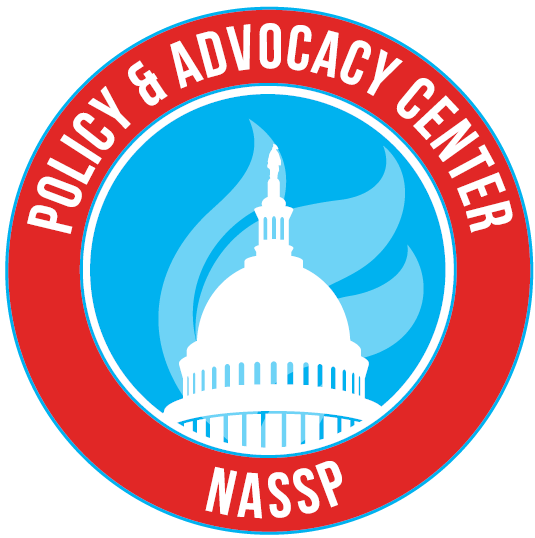To express support for teacher leadership and offer recommendations to federal, state, and local policymakers and school leaders on how to create sustainable and supportive systems for teacher leaders to collaborate with principals for the success of their students.
While the formal or informal leadership roles of teachers may vary in different schools and districts, teacher leadership is broadly defined in the 2011 Teacher Leader Model Standards as “the process by which teachers, individually or collectively, influence their colleagues, principals, and other members of the school community to improve teaching and learning practices with the aim of increased student learning and achievement.”

According to the 2012 MetLife Survey of the American Teacher, three-quarters of all principals reported that the job “has become too complex,” which demonstrates a need for principals to involve teacher leaders by instilling shared responsibility for school culture, policies, and practices. Many teachers already assume duties such as mentoring and coaching, serving as curriculum supervisors, leading professional learning communities, and participating on school leadership teams. But while nearly 70 percent of teachers say they have no interest in becoming a principal, more than half expressed interest in teaching part-time while also taking on additional roles or responsibilities in their school or district.
The National Network of State Teachers of the Year reports that as of 2013, eights states had teacher leader certification endorsements: Arizona, Georgia, Idaho, Kansas, Kentucky, Louisiana, Virginia, and Wyoming. However, the designations were not solely based on the Teacher Leader Model Standards and differed widely between states. In addition, no state required teachers to have a specific endorsement in order to serve in a teacher leadership role.
Guiding Principles
- Teacher quality is the single most important school-based factor in student achievement, followed closely by school leadership quality.
- Building Ranks provides a framework for effective school leaders to improve the performance of each student by building culture and leading learning.
- The 2015 Professional Standards for Educational Leaders state that effective leaders “develop the capacity, opportunities, and support for teacher leadership and leadership from other members of the school community.”
- Principals should have specific authority over hiring and other school personnel decisions, budgets, and the implementation of laws and district policies.
- As a supporting organization of the U.S. Department of Education’s Teach to Lead initiative, NASSP champions the program’s mission to advance student outcomes by expanding opportunities for teacher leadership.
Recommendations
Recommendations for Federal Policymakers
Fully fund Title II, Part A of the Elementary and Secondary Education Act, which provides resources for states and districts to strengthen teacher and principal preparation programs; reform educator certification and licensure requirements; develop career advancement initiatives for teachers; and offer professional learning opportunities for teacher leaders and principals.
As part of the reauthorization of the Higher Education Act, create a Teacher Leader Development Program to provide grants for teacher leaders, including those in high-need schools, to receive professional development, training, and support that ultimately leads to a teacher leader credential.
Enact legislation to strengthen educator preparation programs, including the creation of residency programs and other induction opportunities for new teachers and principals.
Recommendations for State Policymakers
Adopt or adapt the 2015 Professional Standards for Educational Leaders and the 2011 Teacher Leader Model Standards, and revise educator certification and licensure, evaluation systems, and professional learning opportunities to align with those standards.
Redesign educator preparation programs to support principals in developing a school culture based on collaboration and shared leadership, and differentiate between the skills and training needed for principals versus those for teacher leaders.
Provide incentives for school districts to develop teacher leader initiatives and to provide compensation for teacher leaders that take on additional roles and responsibilities within their schools.
Recommendations for District Leaders
Develop a systemic approach to establishing pathways for career advancement and a comprehensive plan for its implementation, evaluation, and continuous improvement. The plan should include the following components:
- Engagement of all stakeholders, including principals, teachers, students, and parents
- Articulation of district and schoolwide goals and flexibility to ensure that teacher leader roles and responsibilities meet the needs of individual schools
- Clear and transparent selection criteria and a fair selection process
- Common planning time and networking opportunities for teacher leaders to collaborate with their peers
- Professional learning opportunities to help build the capacity of teachers to take on new leadership roles
- Evaluation of teacher leaders based on performance criteria aligned to their leadership role and responsibilities
- Long-term and sustainable funding
- Recognition of teacher leaders for their contributions to the school and district
Negotiate with teacher union leaders, if applicable, to ensure teacher leadership roles are included in employment contracts or agreements and provide significant and sustainable compensation for teachers to serve in leadership roles in their schools, i.e. release time, stipends, authority, etc.
Provide professional learning opportunities for principals who support teacher leaders, including training on how to mentor and coach teacher leaders, delegate responsibilities, and create a school culture and climate where teacher leaders can be successful.
Offer teacher leaders and principals opportunities to assume meaningful roles in shaping district policies and practice.
Recommendations for School Leaders
Develop a school culture that provides meaningful decision-making roles for teachers of all experience levels and is committed to a shared vision and mission focused on student success.
Absent a district structure for teacher leadership, work collaboratively with teachers to conduct a school needs assessment to determine gaps in leadership; identify multiple and varied formal or informal leadership opportunities; and provide flexible scheduling and additional compensation that would allow teachers to take on increased responsibility for professional learning, curriculum, or school improvement activities. Leadership opportunities could include serving as mentors, instructional coaches, or master teachers.
Create teacher leadership pipelines for effective teachers and build the leadership capacity of teachers through efforts that are job-embedded, individualized for their needs, and appropriate for adult learners.
Foster opportunities for collaboration to improve student achievement such as teacher teams; regularly scheduled common planning; and structures for teachers to engage in collective reflection or learning and to give each other constructive, actionable feedback.
Resources
- ASCD (2015). Teacher leadership: the what, why, and how of teachers as leaders. Retrieved from http://www.ascd.org/ASCD/pdf/siteASCD/wholechild/fall2014wcsreport.pdf
- Education Commission of the United States. (2016). Mitigating teacher shortages: teacher leadership. Retrieved from https://www.ecs.org/mitigating-teacher-shortages-teacher-leadership/
- Killion, J., Harrison, C., Colton, A., Bryan, C., Delehant, A., & Cooke, D. (2016). A systemic approach to elevating teacher leadership. Oxford, OH: Learning Forward.
- MetLife (2012). The MetLife survey of the American teacher: challenges for school leadership. Retrieved from https://www.metlife.com/content/dam/microsites/about/corporate-profile/MetLife-Teacher-Survey-2012.pdf
- Natale, C., Gaddis, L., Bassett, K., & McKnight, K. (2013). Creating sustainable teacher career pathways: a 21st century imperative. New York, NY: Pearson & National Network of State Teachers of the Year.
- National Association of Secondary School Principals (2018). Building ranks: a comprehensive framework for school leaders (2018). Reston, VA: Author.
- National Policy Board for Educational Administration (2015). Professional standards for educational leaders 2015. Reston, VA: Author.
- Teacher Leadership Exploratory Consortium (2011). Teacher leader model standards. Retrieved from http://www.nea.org/assets/docs/TeacherLeaderModelStandards2011.pdf
- Valdez, M., Broin, A., & Carroll, K. (2015). Untapped: transforming teacher leadership to help students succeed. New York, NY: New Leaders.

